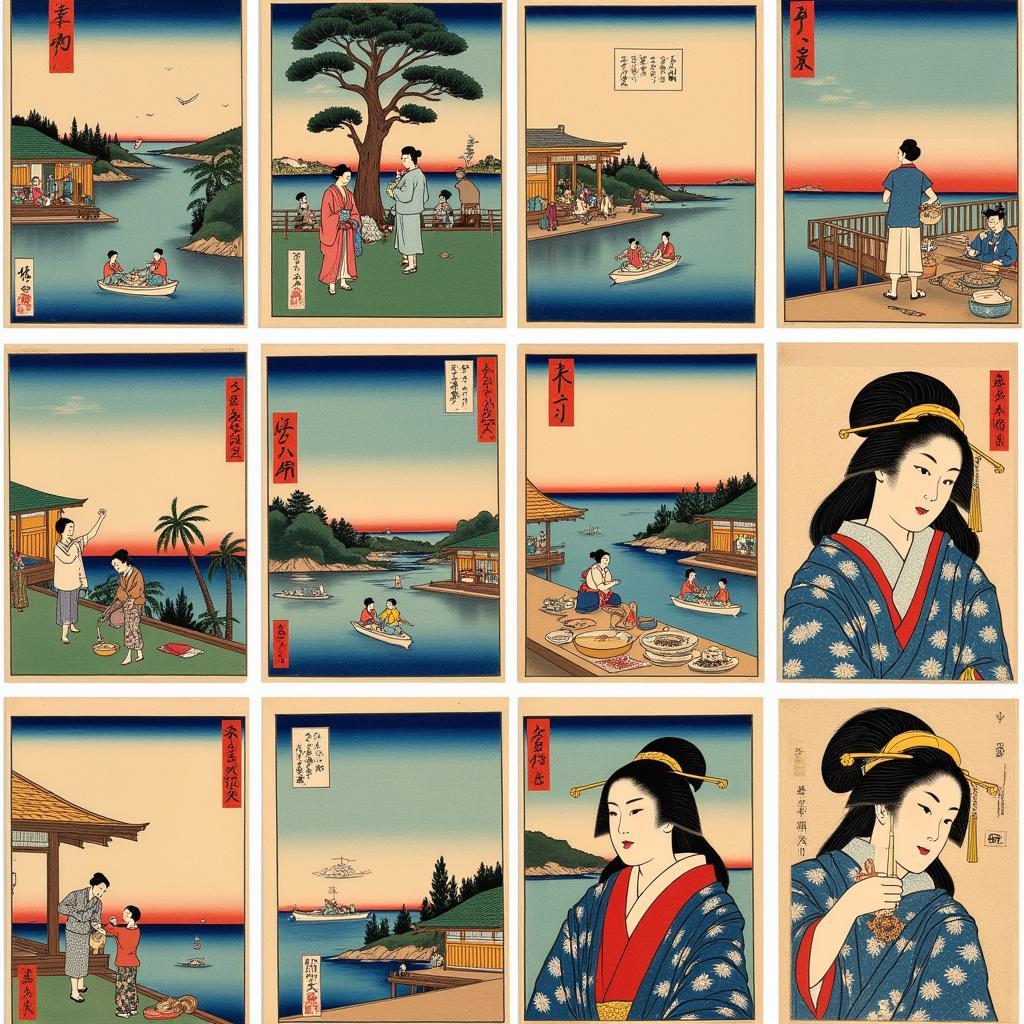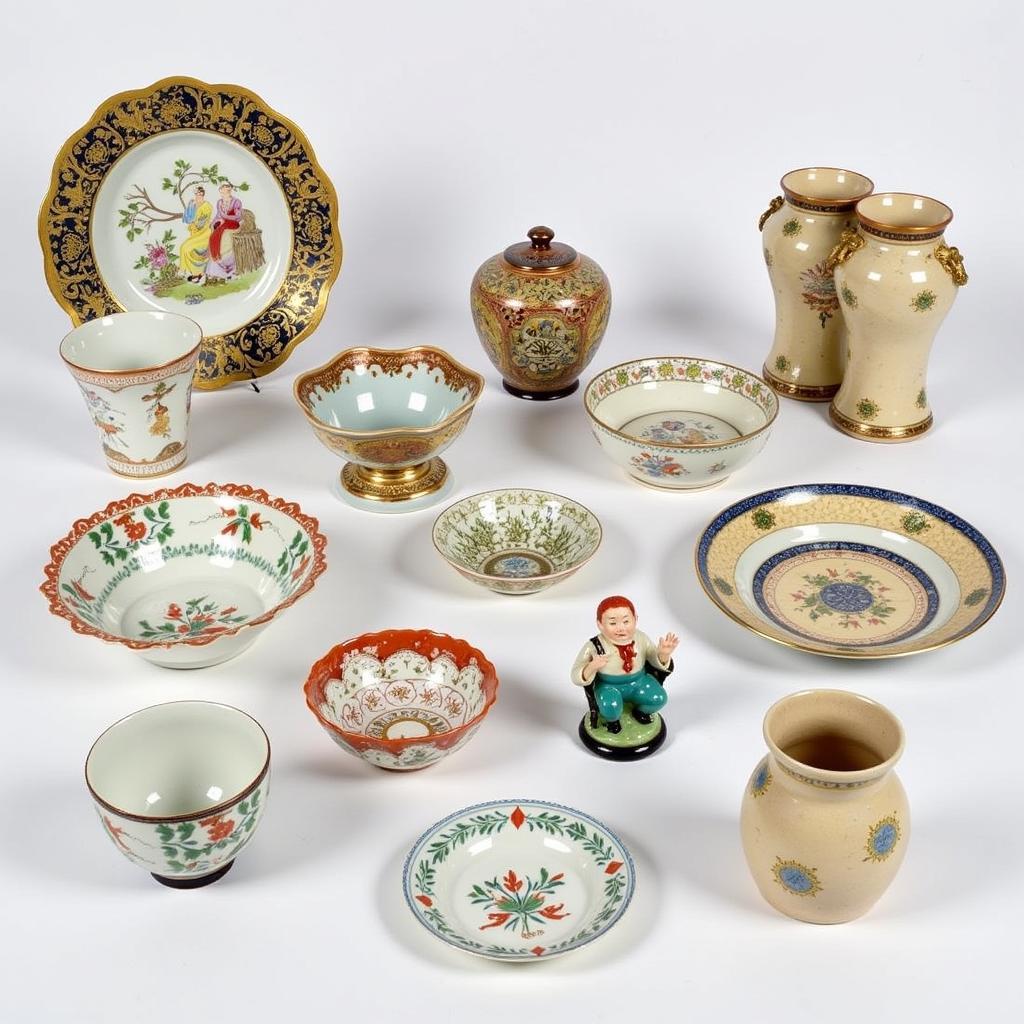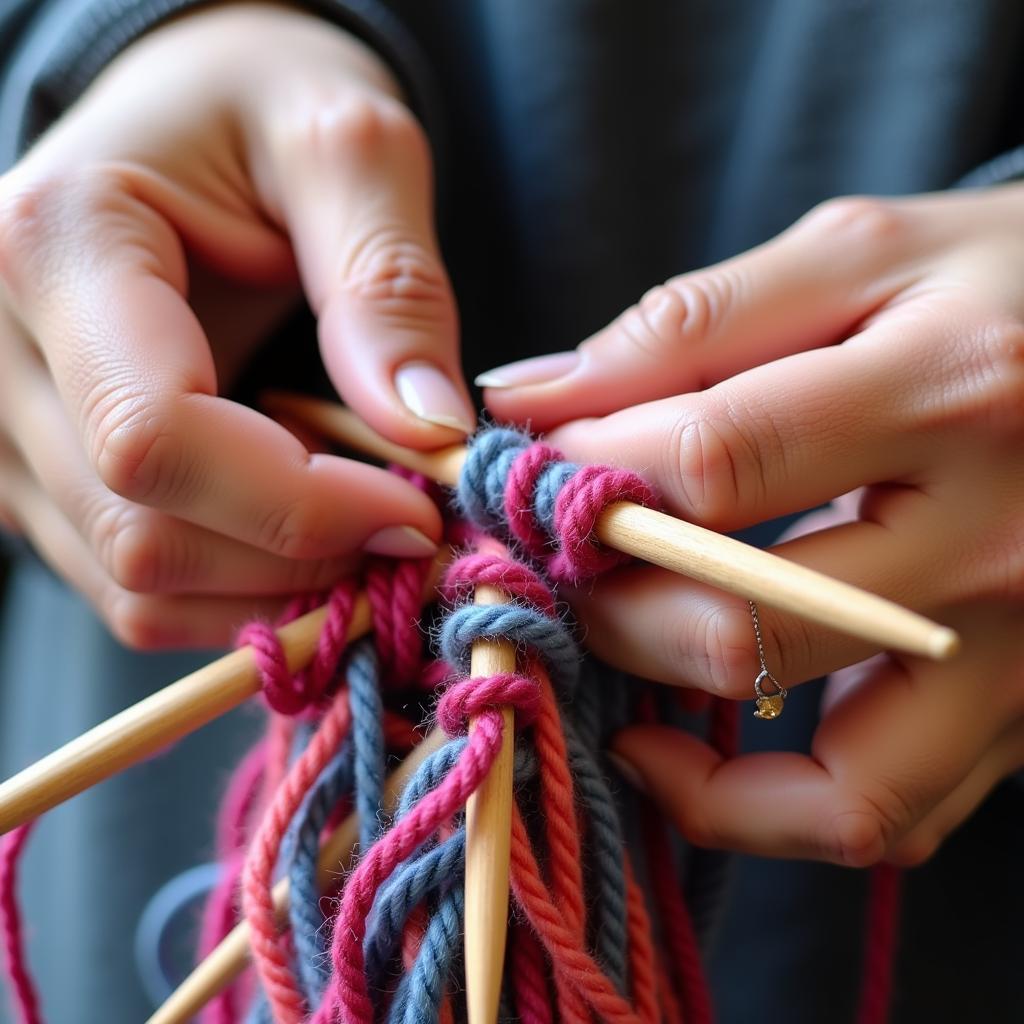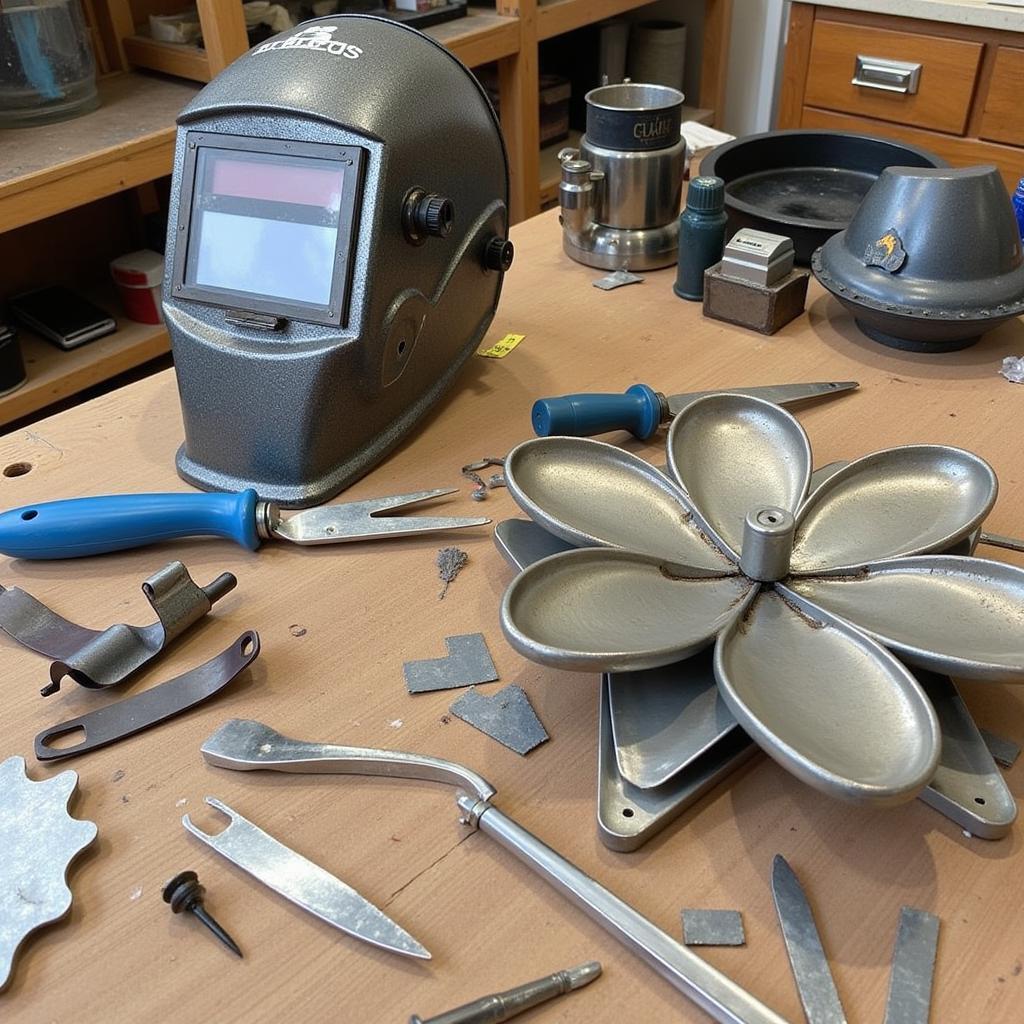Exploring the Timeless Beauty of Antique Japanese Art
Antique Japanese Art holds a unique allure, captivating art enthusiasts and collectors worldwide with its exquisite craftsmanship and rich cultural heritage. From intricate woodblock prints to delicate porcelain and powerful samurai swords, the world of antique Japanese art offers a diverse and fascinating journey through centuries of artistic innovation. This exploration delves into various forms, historical contexts, and key elements that define the enduring appeal of antique Japanese art. After reading this, you’ll have a deeper appreciation for the artistry and significance behind these captivating pieces.
A Journey Through the History of Antique Japanese Art
Japanese art has a long and complex history, influenced by various factors such as religion, philosophy, and contact with other cultures. Early Japanese art often featured religious themes and motifs, reflecting the influence of Buddhism and Shintoism. Over time, new artistic styles emerged, incorporating elements from Chinese and Korean art, eventually evolving into distinct Japanese aesthetics. The Edo period (1603-1868) witnessed a flourishing of artistic expression, with the development of iconic art forms like ukiyo-e woodblock prints, depicting scenes of everyday life, landscapes, and beautiful women. These prints, created by artists such as Hokusai and Hiroshige, gained immense popularity both within Japan and internationally, influencing Western art movements like Impressionism.
 Ukiyo-e Woodblock Prints: A Window into Japanese Life
Ukiyo-e Woodblock Prints: A Window into Japanese Life
Key Characteristics of Antique Japanese Art
Antique Japanese art is characterized by its emphasis on natural beauty, simplicity, and asymmetry. Artists often sought to capture the essence of a subject through minimalist representations, leaving space for contemplation and interpretation. The use of natural materials, such as wood, bamboo, and paper, is another prominent feature, reflecting a deep connection to nature. Japanese artists also demonstrated remarkable skill in various techniques, from delicate brushwork in painting and calligraphy to intricate carving in wood and ivory. The attention to detail and the pursuit of perfection are evident in every aspect of antique Japanese art, from the smallest netsuke (miniature sculptures used as toggles) to grand architectural structures.
 Antique Japanese Porcelain and Ceramics: Elegance and Functionality
Antique Japanese Porcelain and Ceramics: Elegance and Functionality
Understanding Different Forms of Antique Japanese Art
Antique Japanese art encompasses a wide range of forms, each with its unique characteristics and historical significance. From scrolls and paintings depicting scenes from classical literature and mythology to decorative screens showcasing intricate lacquer work, the diversity of artistic expression is truly remarkable. Sculpture, both religious and secular, plays a significant role, with Buddhist statues and carved wooden masks representing important artistic traditions. Other notable forms include ceramics, textiles, metalwork, and lacquerware, each demonstrating the exceptional skills and creativity of Japanese artisans throughout history. For example, [blue and white art] has a long and rich history in Japan, influenced by Chinese porcelain traditions.
Where to Find and Appreciate Antique Japanese Art
Today, antique Japanese art can be found in museums, galleries, and private collections worldwide. Major museums like the Metropolitan Museum of Art in New York and the British Museum in London house extensive collections of antique Japanese art, offering visitors a glimpse into the rich artistic heritage of Japan. For those interested in acquiring antique Japanese art, reputable auction houses and specialized dealers provide opportunities to purchase authentic pieces. It is essential to do thorough research and seek expert advice when collecting antique Japanese art to ensure authenticity and provenance. However, even without owning a piece, you can still appreciate the beauty of this art form through books, online resources, and visits to museums and galleries.
What are the most sought-after types of antique Japanese art?
Some of the most sought-after types of antique Japanese art include ukiyo-e woodblock prints, antique Japanese swords, and fine porcelain. The value of these pieces can vary significantly depending on factors like age, condition, and the artist’s reputation. Fans of [folk art patterns] might find some similar themes and motifs in antique Japanese textiles and ceramics.
Preserving the Legacy of Antique Japanese Art
Preserving antique Japanese art is crucial for ensuring that future generations can continue to appreciate and learn from this rich cultural heritage. Proper conservation techniques are essential for protecting these delicate artifacts from damage caused by environmental factors like humidity, light, and temperature fluctuations. Museums and collectors play a vital role in preserving antique Japanese art through careful storage, restoration, and research. By understanding and appreciating the historical and artistic significance of these objects, we can contribute to their preservation and ensure that the legacy of antique Japanese art continues to inspire and captivate for generations to come. Perhaps you’re also drawn to other art forms like [pressed botanical wall art], which shares a similar appreciation for natural beauty found in antique Japanese art. Antique Japanese art can also be incorporated into interior design. Imagine how stunning [art deco ceramic tiles] would look alongside a display of Japanese ceramics! Similarly, a piece of [patriotic folk art] could create a dynamic contrast with the minimalist aesthetics of Japanese art.
Conclusion
Antique Japanese art offers a fascinating glimpse into a world of exquisite craftsmanship, rich cultural traditions, and profound artistic expression. From delicate paintings to powerful samurai swords, these pieces tell stories of history, mythology, and everyday life. By exploring the diverse forms and historical contexts of antique Japanese art, we can gain a deeper understanding and appreciation for its enduring beauty and significance. The world of antique Japanese art is vast and rewarding, waiting to be discovered and cherished.
FAQ
-
What is the Edo period in Japanese art?
The Edo period (1603-1868) was a time of significant artistic development in Japan, marked by the rise of ukiyo-e woodblock prints and a flourishing of other art forms. -
Where can I see antique Japanese art?
You can see antique Japanese art in museums worldwide, including the Metropolitan Museum of Art and the British Museum. -
How can I learn more about antique Japanese art?
You can learn more through books, online resources, and by visiting museums and galleries.
When you need help, please contact Phone Number: 02462573573, Email: [email protected] Or visit: Savico Megamall, 7-9 Đ. Nguyễn Văn Linh, Gia Thụy, Long Biên, Hà Nội 10000, Việt Nam. We have a 24/7 customer service team.




